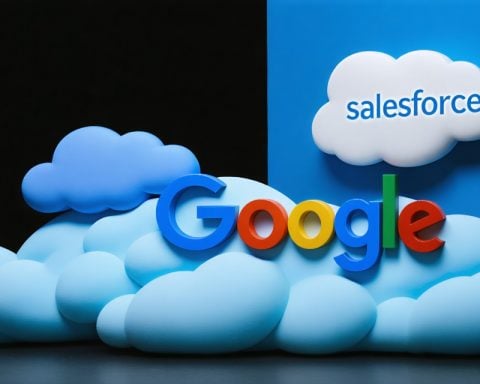There is an ongoing debate surrounding Apple’s identity as a product-centric company. Traditionally recognized for its innovative hardware like the iPhone, Apple appears to be shifting its focus toward services. This transformation is particularly evident as revenues from services approach that of its products, suggesting a possible identity crisis.
In reflecting on Apple’s current status, one might consider whether the company, now in its fourth decade, is experiencing a mid-life evolution. The latest product launches have raised questions about the emphasis on hardware innovation, especially when the iPhone release fails to excite consumers. Instead, Apple seems to be prioritizing service enhancements to foster customer loyalty and retention.
This strategic pivot includes compelling pricing for iPhone models, particularly in a challenging economic climate. In contrast to expectations of price hikes, Apple has managed to maintain competitive pricing amidst rising inflation, which signifies a focus on retaining its customer base. This approach is critical as it may indicate an adaptation strategy that prioritizes sustained engagement over immediate profit.
As Apple navigates this transitional phase, the emphasis on software innovation is more critical than ever. By integrating advanced software features, particularly in artificial intelligence, Apple aims to deliver value while ensuring customer satisfaction. The challenge remains whether this service-oriented strategy will genuinely sustain long-term growth, as the reliance on hardware for foundational success begins to diminish.
Apple’s Evolution: From Product Powerhouse to Service-Oriented Company
In recent years, Apple Inc. has undergone a significant transformation, evolving from a predominantly hardware-focused company to a service-oriented enterprise. This shift raises important questions about the company’s future direction and the impact on its longstanding identity.
What are the driving forces behind Apple’s transition to services?
Apple’s push towards services stems from several factors. The saturated smartphone market has created intense competition, making it difficult for Apple to rely solely on hardware sales. As smartphone innovation slows, Apple has identified services as a crucial area for growth. With services like Apple Music, Apple TV+, and the App Store generating a substantial portion of its revenue, the company aims to create a more stable and recurring income stream.
How significant are Apple’s service revenues compared to hardware sales?
As of 2023, Apple’s services division has reportedly generated over $80 billion in annual revenue, nearing the combined sales of its flagship products like the iPhone. This shift is indicative of changing consumer preferences, with customers increasingly valuing flexibility, convenience, and subscription-based models over one-time purchases.
What are the key challenges associated with this transition?
While transitioning to a service-oriented model presents opportunities, it also brings challenges. Competition in the streaming and app markets is fierce, with numerous players vying for consumer attention and subscription dollars. Moreover, consumer loyalty can be fragile; a service’s popularity can fluctuate significantly based on user experience and perceived value. Apple must consistently innovate and improve its services to avoid alienating its user base.
Are there controversies linked to Apple’s service-oriented approach?
Controversies have arisen regarding Apple’s pricing strategies and the push for in-house services. Critics argue that high subscription costs associated with Apple services may limit access for lower-income customers. Furthermore, Apple’s stringent control over the App Store has faced scrutiny, with allegations regarding monopolistic behavior and unfair practices against developers. The ongoing legal battles related to these themes directly challenge Apple’s business practices and its ability to navigate the evolving digital landscape.
What are the advantages and disadvantages of Apple’s shift to services?
- Advantages:
- Stable revenue stream: Service subscriptions provide consistent income, reducing dependency on hardware sales.
- Increased customer engagement: Enhanced services encourage users to stay within the Apple ecosystem, fostering brand loyalty.
- Opportunities for innovation: The service sector allows Apple to leverage technology advancements, especially in AI and machine learning.
- Disadvantages:
- Heightened competition: The service market is crowded, and Apple faces challenges from established players like Netflix, Spotify, and Amazon.
- Vulnerability to market trends: Shifting consumer interests can create instability, directly impacting subscription renewals and usage rates.
- Criticism over pricing and practices: As cited, the high cost of services and strict App Store regulations have drawn criticism that could harm Apple’s reputation.
In conclusion, as Apple navigates this pivotal transition from a product-centric paradigm to a service-oriented model, it faces both opportunities for growth and significant challenges that could redefine its future. The balance of delivering innovative services while maintaining its hardware roots will play a crucial role in determining the company’s trajectory moving forward.
For more information on Apple’s products and services, visit Apple’s official website.























